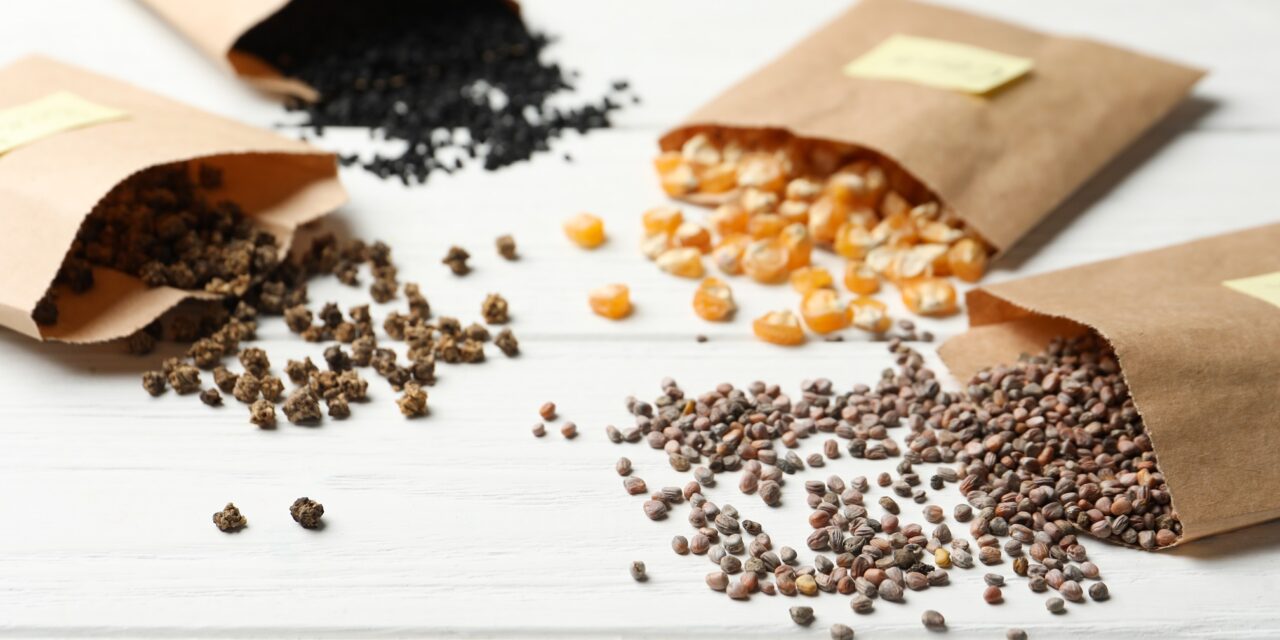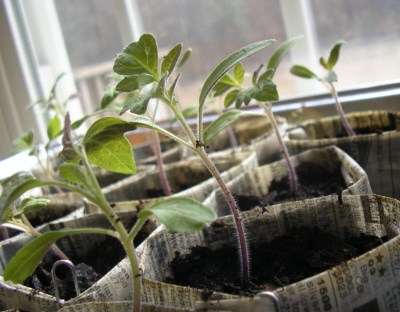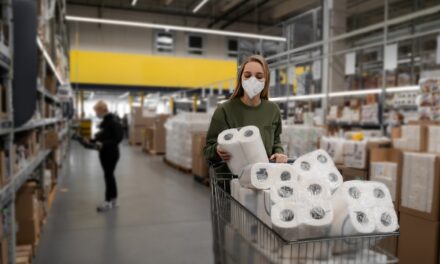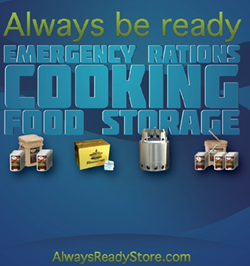In a world often riddled with uncertainty, self-sufficiency becomes more than a lifestyle; it’s a necessity. Imagine the empowering feeling of growing your food, knowing that you have a reliable source of sustenance at your fingertips.
Starting a seed bank for preparedness is the first step towards this independence. It’s about cultivating a diverse collection of seeds that will ensure your survival and nourish your family in any situation.
This journey towards self-reliance is not just about survival, but also about embracing a lifestyle that respects and nurtures the environment. So, are you ready to take the first step towards self-sufficiency? Join us as we delve into the fascinating world of seed banking. Together, we will explore how to start, maintain, and use a seed bank for preparedness.
Why Start a Seed Bank?
Starting a seed bank is an essential step towards preparedness and self-sufficiency. It provides a reliable source of diverse, high-quality seeds for future planting, ensuring food security in uncertain times. By preserving seeds, you’re safeguarding genetic diversity, which is crucial for adapting to changing environmental conditions and potential threats like disease or pests.
Seed banks also offer an opportunity to cultivate heirloom varieties, many of which have been passed down through generations and hold unique flavors and nutritional profiles. These seeds are often more resilient and adaptable than commercial seeds, making them a valuable asset in any survival situation.
Creating a seed bank isn’t just about survival, though. It’s about taking control of your food supply, knowing exactly where your food comes from, and ensuring it’s grown without harmful chemicals or GMOs. It’s a way to connect with nature, learn about different plant species, and contribute to the preservation of biodiversity.
Starting a seed bank requires some initial investment of time and resources, but the benefits far outweigh the costs. You’ll need to learn about seed saving techniques, storage conditions, and germination requirements for different species. But once you’ve mastered these skills, you’ll have a renewable source of food and the peace of mind that comes with being prepared for any situation.
Remember, a well-stocked seed bank is more than just a collection of seeds. It’s a living library of plant genetics, a tool for food sovereignty, and a testament to the resilience and foresight of its creator. So, why not start your seed bank today?
FREE SUBSCRIPTION TO PREPARE MAGAZINE
Choosing the Right Seeds
When starting a seed bank for preparedness, the first step is selection. It’s crucial to choose seeds that are hardy, easy to grow, and can thrive in your local climate. These might include vegetables like tomatoes, peppers, and beans, or grains such as wheat and corn.
Selecting heirloom seeds is another important consideration. Unlike hybrid seeds, heirloom varieties have been passed down through generations, and they retain their original traits. This makes them a reliable choice for a seed bank as they are known for their longevity and resilience.
Also, consider the nutritional value of the plants you’re growing. Opt for seeds that will produce nutrient-dense foods. This way, you’re not just growing food, but you’re also ensuring that your diet remains balanced and healthy during times of emergency.
Seed storage is another critical aspect. You’ll want to store your seeds in a cool, dark, and dry place to maintain their viability. It’s also advisable to regularly rotate your seed stock to ensure freshness.
Finally, remember to include seeds of plants that are beneficial to your garden’s ecosystem. These could be plants that attract beneficial insects or those that naturally repel pests.
Starting a seed bank for preparedness is a proactive step towards self-sufficiency. By choosing the right seeds, you’re laying the foundation for a sustainable and resilient food source.
How to Store Seeds?
Storing seeds properly is a crucial step in starting a seed bank for preparedness. The first step is to dry the seeds properly. This helps in preserving the viability of the seeds for a longer period. The drying process should be done in a cool, dark place with good air circulation.
Once the seeds are adequately dried, they should be stored in an airtight container. This prevents moisture from reaching the seeds, which can lead to mold growth and seed decay. Glass jars with rubber seals are often recommended for this purpose.
The stored seeds should be kept in a cool and dark place. This helps in preserving the seeds’ vitality. The ideal temperature for seed storage is below 40 degrees Fahrenheit.
It’s also important to label your seeds. This should include the type of seed and the date of storage. This information can be crucial when it’s time to use the seeds.
- Dry the seeds
- Store in an airtight container
- Keep in a cool, dark place
- Label your seeds
FREE SUBSCRIPTION TO PREPARE MAGAZINE
Remember, the key to a successful seed bank is not just about collecting seeds, but also about storing them properly. This ensures that when the time comes to use the seeds, they are still viable and ready to grow.
Long-term Seed Storage Tips
Starting a seed bank for preparedness is a crucial step towards ensuring food security. Seed storage plays an integral role in this process as it can significantly extend the lifespan of your seeds. The first tip for long-term seed storage is to keep seeds dry. Moisture can lead to the growth of mold and fungi, which can damage your seeds.
Another key tip is to store seeds in a cool place. High temperatures can reduce the seeds’ viability and shorten their lifespan. A temperature of about 40 degrees Fahrenheit is ideal for seed storage.
Proper packaging is also essential when storing seeds. Use airtight containers to prevent moisture and pests from reaching your seeds. Glass jars with tight-fitting lids or vacuum-sealed bags are excellent choices for seed storage.
One must also consider the seed variety. Some seeds, like those of tomatoes and peppers, can last for up to ten years if stored correctly. Others, like onions and parsley, have a shorter shelf life.
Lastly, regular seed testing is crucial. It ensures that your seeds are still viable and ready for planting when the time comes. This involves planting a few seeds from your storage and checking if they germinate.
Starting a seed bank for preparedness is a long-term commitment, but with these tips, you can ensure the longevity and viability of your seeds.
Maintaining Your Seed Bank
Maintaining a seed bank is an essential aspect of preparedness planning. Regularly check your seed bank to ensure the seeds are still viable and replace any that have passed their germination period. This practice, known as seed rotation, is crucial for the longevity of your seed bank.
Store your seeds in a cool, dark, and dry place to prevent them from sprouting prematurely. Airtight containers or vacuum-sealed bags are ideal for seed storage, as they protect seeds from moisture and pests.
Labeling is another important aspect of seed bank maintenance. Clearly mark each seed packet with the type of seed and the date of storage. This helps in effective seed rotation and prevents confusion during planting.
Seed diversity is also essential for a well-rounded seed bank. Including a variety of fruits, vegetables, herbs, and grains in your seed bank ensures you have a balanced diet in case of emergencies.
Remember, the key to a successful seed bank is regular maintenance and rotation. With these tips, you can ensure your seed bank remains a reliable source of food for years to come.
FREE SUBSCRIPTION TO PREPARE MAGAZINE
Trading and Sharing Seeds
The act of trading and sharing seeds is a vital part of establishing a successful seed bank for preparedness. This practice not only fosters community engagement, but also enhances biodiversity and ensures the survival of various plant species.
By trading seeds, you can diversify your seed bank, which is crucial for long-term sustainability. Different plant species have different growth requirements and resilience to environmental changes. Therefore, having a wide variety of seeds increases the chances of successful plant growth and food production, regardless of the circumstances.
Sharing seeds also plays a significant role in preserving heirloom varieties. These are plants that have been passed down through generations, selected for specific traits, and adapted to local conditions. By sharing these seeds, we can preserve our agricultural heritage and protect biodiversity.
Here are a few tips on how to effectively trade and share seeds:
- Always store seeds properly to maintain their viability.
- Ensure the seeds are labeled correctly with their variety and date of collection.
- Consider the needs and preferences of the person you are trading or sharing with.
Remember, the goal of a seed bank is not just survival, but also the preservation of biodiversity and agricultural heritage. By trading and sharing seeds, we can contribute to this goal and ensure a sustainable future.
Best Practices for Seed Germination
 When starting a seed bank for preparedness, it’s crucial to understand the best practices for seed germination. To ensure the viability of your seeds, proper storage is key. Keep your seeds in a cool, dry place, away from direct sunlight. The use of silica gel packets can help maintain low humidity levels, extending the lifespan of your seeds.
When starting a seed bank for preparedness, it’s crucial to understand the best practices for seed germination. To ensure the viability of your seeds, proper storage is key. Keep your seeds in a cool, dry place, away from direct sunlight. The use of silica gel packets can help maintain low humidity levels, extending the lifespan of your seeds.
When you’re ready to plant, soak your seeds in water for 12-24 hours. This softens the seed coat and kickstarts the germination process. Plant your seeds at the correct depth; a general rule is to plant seeds three times as deep as their width.
Maintaining the optimal temperature for germination is vital. Different plant species have unique temperature requirements, so be sure to research this beforehand. A heating mat can help maintain consistent soil temperatures and improve germination rates.
Watering is another significant factor in seed germination. Overwatering can lead to rot, while underwatering can hinder germination. Maintain a balance by ensuring the soil is consistently moist, but not waterlogged.
Lastly, remember that patience is key. Germination can take anywhere from a few days to a few weeks, depending on the plant species. By following these best practices, you’ll be well on your way to starting a successful seed bank for preparedness.
Dealing with Seed Legislation and Restrictions
When starting a seed bank for preparedness, understanding the seed legislation in your region is vital. Seed laws vary widely, from restrictions on importing foreign species to rules governing the sale and trade of seeds. These laws are often in place to protect local ecosystems from invasive species, but they can also impact your ability to build a diverse seed bank.
Seed restrictions often apply to certain types of seeds, particularly those from plants considered invasive or potentially harmful to local ecosystems. It’s essential to research these restrictions before purchasing seeds to avoid legal complications.
In some regions, there may also be laws regarding the storage and preservation of seeds. For instance, some countries require that seeds be stored in specific conditions to maintain their viability. It’s crucial to understand these regulations to ensure your seed bank remains compliant.
In addition to legal restrictions, there may also be practical considerations. Certain seeds may require specific conditions for germination, making them less suitable for a general-purpose seed bank.
Seed legislation can also impact the sourcing of seeds. Some laws restrict the sale of seeds to licensed vendors, while others may prohibit the trade of certain species entirely. It’s crucial to understand these laws to ensure you’re sourcing your seeds legally and ethically.
Finally, remember that legislation can change, so it’s important to stay informed about any updates to seed laws in your region. Regularly checking with your local agricultural extension or seed trade organization can help keep you up-to-date on any changes.
Conclusion: Harvesting the Benefits of Seed Banking
Starting a seed bank is an essential step towards preparedness; it not only ensures food security but also contributes to preserving biodiversity. This article has extensively covered the importance of seed banking, from understanding why to start a seed bank, to the selection of appropriate seeds and their proper storage.
Long-term seed storage tips have been provided, highlighting the importance of maintaining the right conditions to ensure seed viability. We’ve also discussed the significance of maintaining your seed bank and the potential benefits of trading and sharing seeds, which can strengthen community resilience and promote diversity.
Best practices for seed germination have been shared, ensuring the successful growth of your seeds. We’ve also touched on the importance of being aware of seed legislation and restrictions, which can impact your seed banking efforts.
As we move forward, trends such as climate change and increased urbanization may pose challenges to seed banking. However, with the right knowledge and practices, these hurdles can be overcome. Remember, starting a seed bank is not just about preparedness, but also about taking part in a global effort to secure our food future and preserve our planet’s biodiversity. So, start your seed bank today and reap the benefits for years to come.








